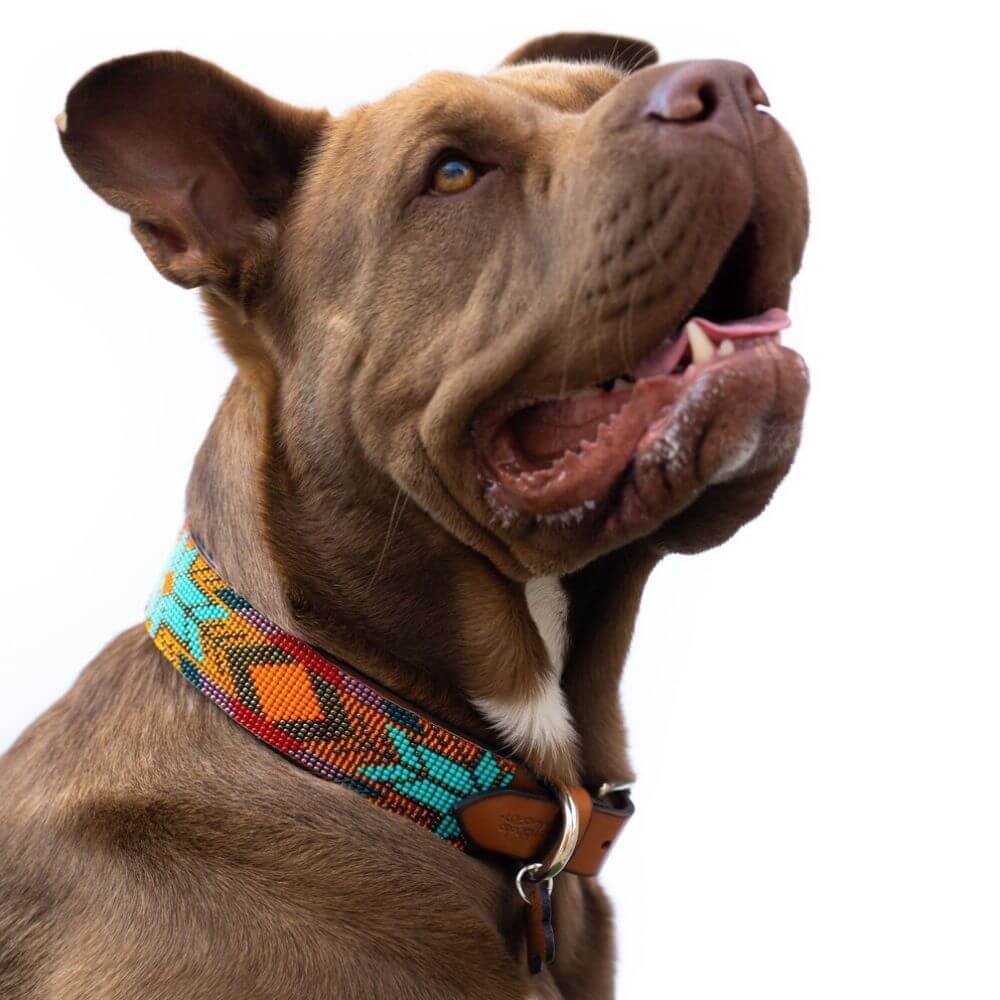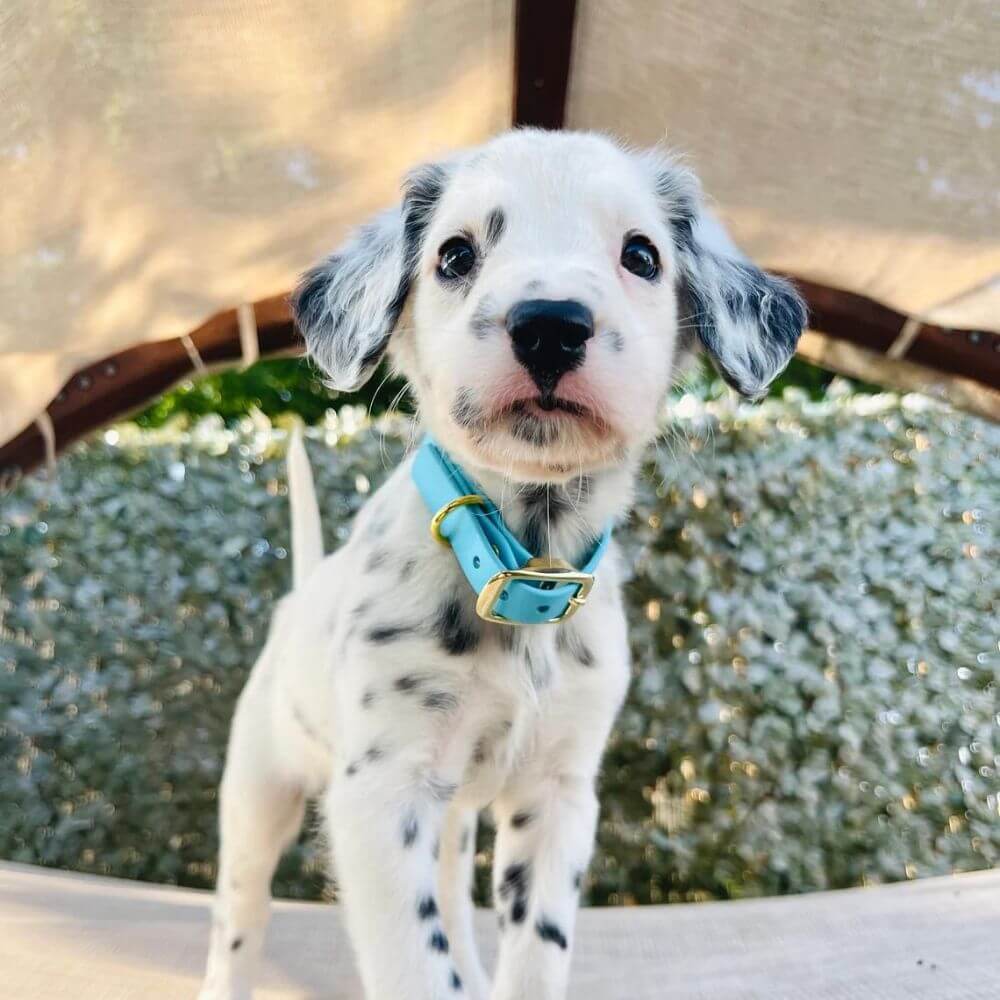How Tight Should a Dog Collar Be? More About Collar Sizes
As a pet owner, you might find yourself puzzled about the fitting of your dog's collar. It's a question that plagues many—how tight should a dog collar be? Ensuring the correct fit of the collar is not just a matter of comfort for your pet; it's also a matter of safety. The implications of an ill-fitted collar can range from discomfort and potential skin issues to the risk of your beloved pet escaping if the collar is too loose.
Visualize being in a position where you can confidently choose and adjust your dog's collar, assured that it provides both comfort and security without causing any undue distress. The key to this confidence lies in understanding and correctly applying a universal standard known as the 'two-finger rule'. This rule serves as a reliable guide when it comes to selecting the right collar for your pet, may it be a normal dog collar or a more specialized one.
The two-finger rule isn't just applicable to collars; it also holds relevance when choosing a dog harness. Just like with dog collars, the fit of the harness is instrumental in ensuring your pet's comfort and safety. A dog harness that's too tight could lead to similar problems as a too-tight collar, and one that's too loose may not provide adequate control, especially with larger dogs.
There are many different types of pet collars available in the market, each catering to different needs and breeds. From puppy collars for the new additions to your family, to wider collar widths for larger dogs, the choices are vast. So, how do you decide which is the best dog collar for your pet? While individual requirements may vary, the two-finger rule remains a constant, reliable measure across all types.
In the following sections, we delve deeper into the importance of the two-finger rule. We'll explore how to effectively apply this rule when adjusting your pet's new collar, ensuring it's neither a loose collar nor one that's uncomfortably tight. Whether you're a new pet parent or an experienced one, this guide will help you ensure your pet's collar is always the perfect fit.
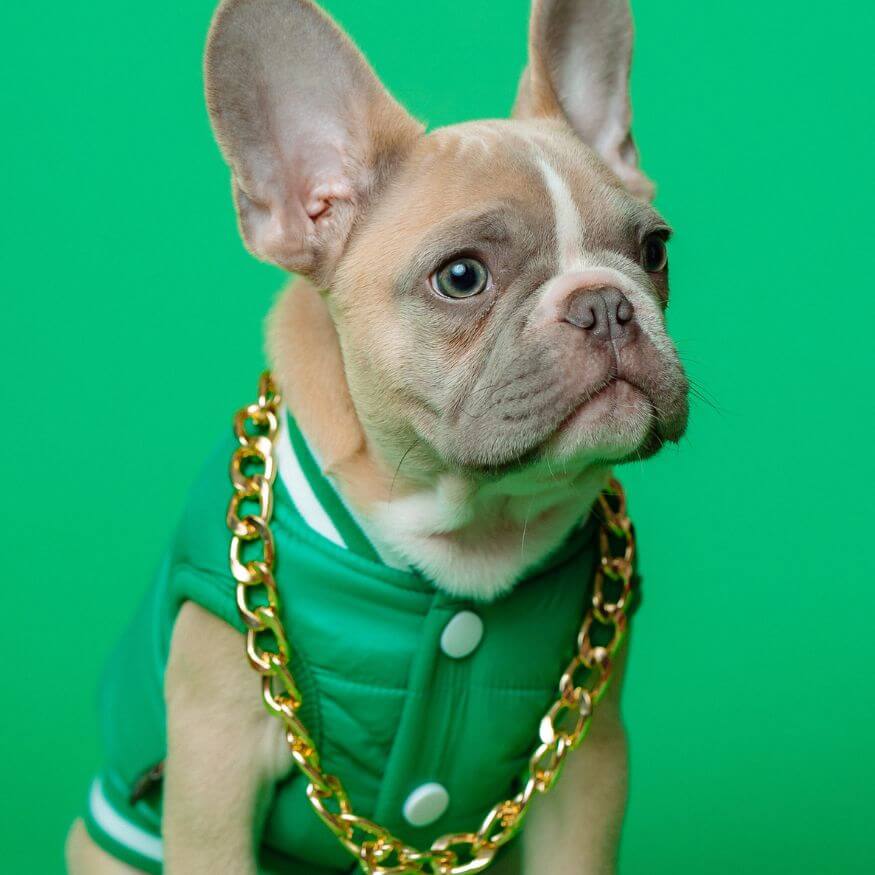
Dog Collars Should Be Comfortably Tight
Dog collars ought to have a snug fit that is neither too loose nor too tight. Ensuring a proper fit is key for maintaining control of your dog during walks or training sessions, all while avoiding causing any discomfort or pain to your pet.
A properly adjusted collar avoids the risk of skin irritations or breathing difficulties, which may arise if the collar is overly tight. Conversely, it also prevents the collar from being excessively loose, which could potentially allow your dog to escape.
When selecting a collar, the primary consideration should always be the comfort and safety of your pet. The collar should fit well around your dog's neck without causing any discomfort, allowing your pet to move freely while still providing you with sufficient control.
The Two-Finger Rule
The Two-Finger Rule is a widely accepted guideline used to ensure that a dog's collar fits correctly and comfortably. The rule essentially states that you should be able to comfortably slide two fingers - not more, not less - under the collar when it's around your dog's neck.
Here's how to apply this rule:
- Fasten the collar around your dog's neck: The collar should not be too tight or too loose. It should be snug, but not restrictive.
- Slide your fingers under the collar: Insert two of your fingers (typically the index and middle finger) between the collar and your dog's neck. If you can do this comfortably, then the collar is generally considered to be well-fitted.
- Check for tightness: If you can't fit two fingers under the collar, it's too tight. This could cause discomfort or even difficulty breathing for your dog.
- Check for looseness: Conversely, if you can fit more than two fingers under the collar, it's too loose. In this case, there's a risk that the collar could slip over your dog's head, which could lead to your dog escaping or getting the collar caught on something.
- Adjust as needed: If the collar fails the Two-Finger Rule test, adjust its size until it passes. Most collars have adjustable straps or holes like a belt.
This Two-Finger Rule helps ensure that the collar is not causing any discomfort or harm to your dog, while also preventing potential hazards associated with collars that are too loose. Always remember to regularly check the fit as dogs can grow or lose weight, which would require a change in collar size.
8-Step Guide to Choosing & Fitting Your Dog's Collar
1. Measure Your Dog's Neck: Use a flexible measuring tape to get the circumference of your dog's neck. If you don't have a measuring tape, a piece of string measured against a ruler will suffice. The tape or string should be snug, but not too tight or too loose.
2. Identify the Correct Spot for Measurement: The right place to measure is a few inches down from the dog's head, not at the base of the neck where the shoulders start or at the top of the neck near the skull. This is the usual position where the collar sits.
3. Add Space for Comfort: Once you have the neck measurement, add about 2 inches (or an inch for very small dogs) to ensure comfort. This extra space allows for some movement and growth.
4. Check Collar Measurements: Dog collar sizes are typically listed by length. Compare the product information for the collar you're considering with your dog's neck size plus the added space.
5. Try on the Dog Collar: If possible, try the collar on your dog before purchasing it. If you can't slide your fingers between the collar and your dog's neck, it's too tight. If there's extra room, it's too loose.
6. Adjust as Necessary: Many dog collars are adjustable. If the collar you've chosen is slightly too big or too small, you may be able to adjust it for a better fit.
7. Refer to Sizing Guides: Once you have your measurements, check the manufacturer's sizing guide to select the right size collar. Keep in mind that sizes can vary between brands.
8. Monitor and Adjust Over Time: Dogs grow and change, and their collar should adapt as well. Regularly monitor your dog's collar fit and adjust or replace the collar as necessary to ensure ongoing comfort and safety.
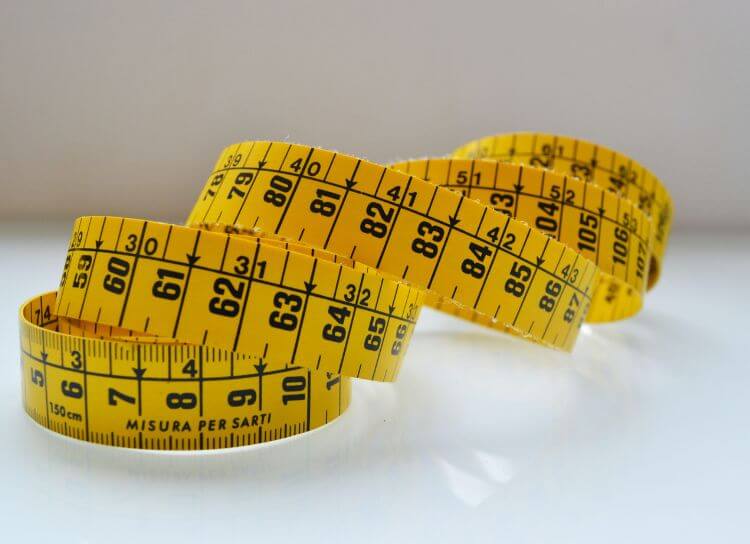
Types of Dog Collars
💠 Leather Collars: Leather collars are durable and long-lasting dog collars made from genuine leather. They are often preferred for their look, feel, plus a good fit and they tend to be comfortable for the dog as they soften over time.
💠 Beaded Collars: This dog collar is designed with decorative beads for aesthetic appeal. While they can be quite attractive, it's important to ensure the beads are securely attached to prevent choking hazards.
💠 Diamond Bling Collars: These are fancy, high-end dog collars adorned with rhinestones or diamonds. They are typically used for special occasions or photo shoots rather than everyday wear due to their cost and delicate nature.
💠 Weighted Collars: These dog collars have added weights and are often used for training purposes. The weights should be adjustable to fit the dog's size and strength. Always use these under professional guidance to prevent injury.
💠 Nylon Collars: Nylon collars are one of the most common type of dog collar due to their affordability, durability, and variety in colors and patterns. They are easy to clean and generally resistant to weather and water.
💠 Lighted Collars & Reflective Collar: Lighted collars & reflective collars include LED lights or reflective materials to increase visibility in low-light conditions. They're especially useful for night walks or in areas with poor lighting.
💠 Smart Collars & GPS Collars: GPS collars come with technology such as GPS trackers, fitness trackers, or even cameras. They're used to monitor a dog's health or location.
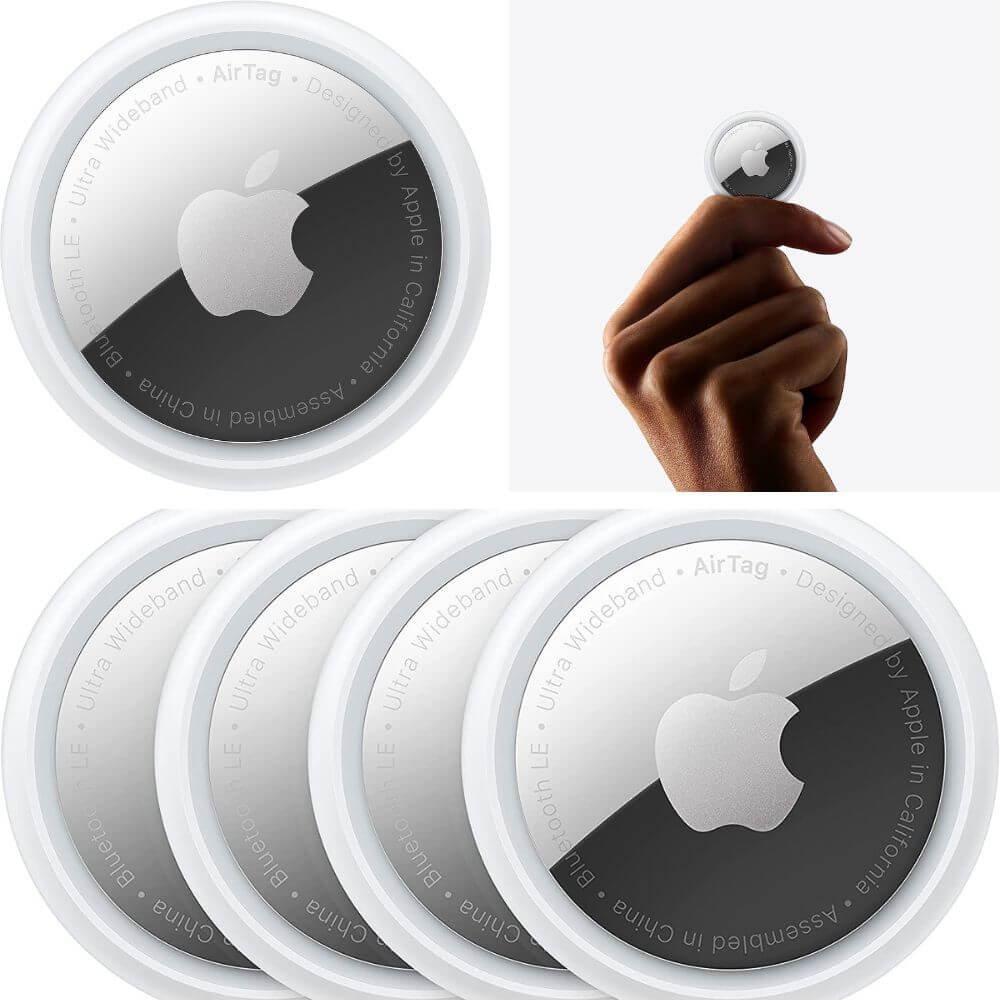
💠 Martingale Collar: Martingale collars often known as a slip collar, tighten slightly when the dog pulls but not enough to choke them. They're often used for training and control.
💠 Chain Collars /Slip Collar: Commonly known as choke chains, these chain collars tighten when the leash is pulled. They should only be used under professional supervision as incorrect usage can cause injury.
💠 Prong or Pinch Collars: Pinch dog collars have metal prongs that tighten around a dog's neck when the leash is pulled. They should only be used for training under professional supervision due to potential risks.
💠 Dog Harness: While not technically a collar, harnesses are often used in place of traditional collars. They distribute pressure over a larger area of the dog's body, reducing strain on the neck.
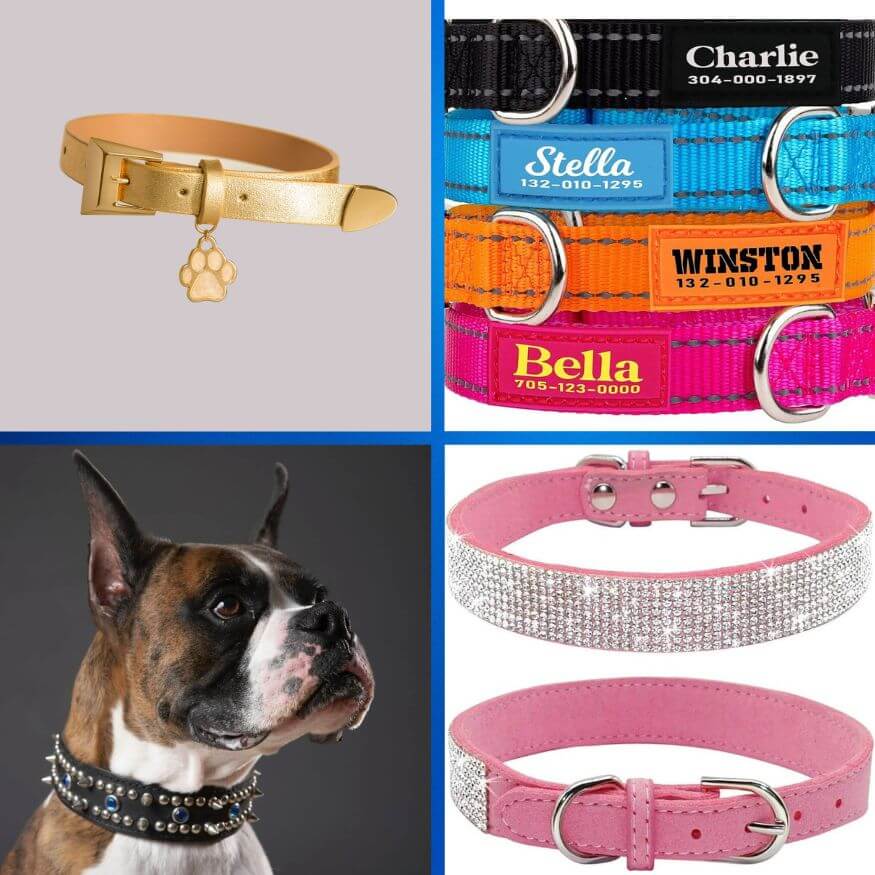
Remember, the best collar for your dog depends on their size, breed, behavior, and your specific needs. Always prioritize your dog's comfort and safety when choosing a collar. And don't forget to add a cute dog tag to your dog's collar as this helps get Fido back to its dog owners.
Signs That Your Dog's Collar Is Too Tight
💠Coughing: This could indicate that the collar is putting pressure on your dog's throat, which can also lead to more serious health problems.
💠Lethargy & Shortness of Breath: If your dog seems unusually tired or has difficulty breathing, a tight collar might be restricting their airflow.
💠Chafing & Loss of Fur: Check your dog's neck regularly. If you notice redness, sores, or hair loss, these could be signs that the collar is rubbing against your dog's skin and causing irritation.
💠Changes in Behavior: If your dog seems uncomfortable, is scratching at their collar more than usual, or shows changes in behavior, it may be due to a collar that's too tight.
💠Injuries on the Neck: Any wounds, scabs, or raw areas around the neck could signal that the collar is too tight and digging into your dog's skin.
For dog owners, it's essential to understand just how tight should a dog collar be for the wellbeing and safety of their furry companions. An overly tight pet collar can result in numerous problems. Every dog is individual, and a dog collar that is suitable for one might not be for another. Therefore, constant vigilance is necessary to observe your pet and make adjustments to the dog collar to maintain an appropriate fit
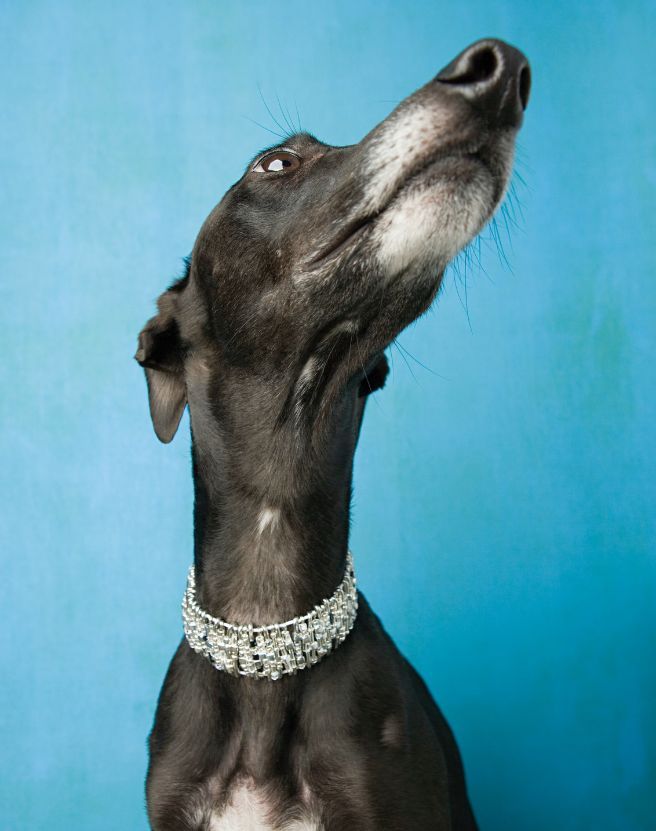
Dog Collar Sizes
Dog collar sizes typically range from extra small to extra-large, and the sizes are often determined based on a dog's neck measurements. Manufacturers may use varying scales, but most follow a general guideline. Here's how they typically size them:
- Extra Small (XS): This size is generally for dogs with a neck measurement of 7-11 inches. It's suitable for very small breeds like Chihuahuas, puppies, or teacup breeds.
- Small (S): Small collars typically fit dogs with neck measurements of 10-14 inches. This can include breeds like Dachshunds, Bichon Frises, or Shih Tzus.
- Medium (M): Medium-sized collars are usually designed for dogs with neck measurements of 13-18 inches. Breeds that typically fall into this category include Beagles, Border Collies, or French Bulldogs.
- Large (L): Large collars are for dogs with neck measurements of 18-26 inches. This includes larger breeds like Labradors, German Shepherds, or Boxers.
- Extra Large (XL): This size is generally for dogs with neck measurements above 26 inches. It's suitable for giant breeds like Great Danes, Saint Bernards, or Mastiffs.
In addition to the length, the width of the collar is also important. Wider collars can help distribute pressure more evenly, which is especially beneficial for strong dogs or dogs who pull on the leash.
Manufacturers recommend measuring your dog's neck and then adding an inch or two for small dogs, or two inches for medium to large dogs, to ensure the collar isn't too tight. Always refer to the manufacturer's specific sizing guide to choose the right collar for your dog.
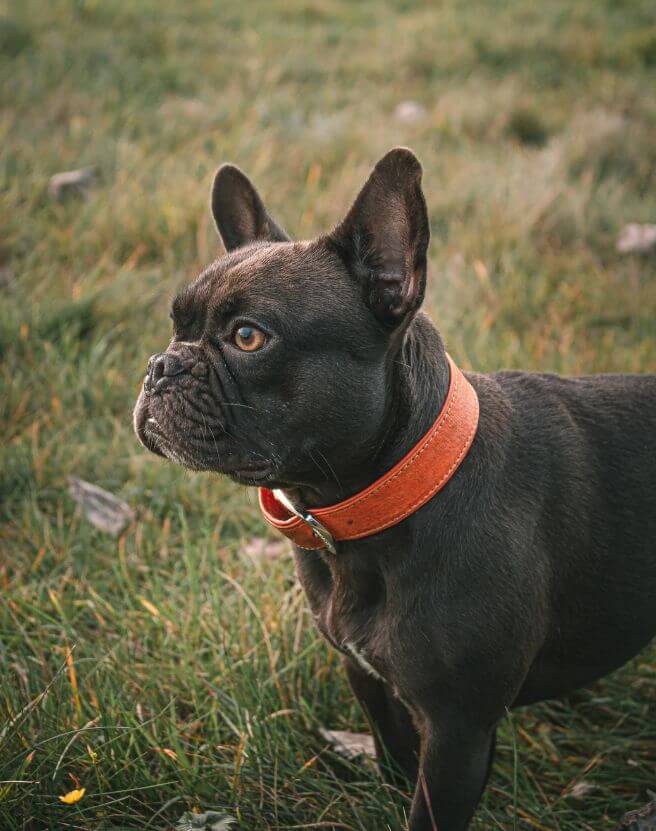
FAQs on Dog Collars & How Tight
A dog collar should be snug, but not too tight. You should be able to slide two fingers comfortably between the collar and your dog's neck. If they fit comfortably, that's likely the right collar fit.
What is the main purpose of a dog collar?
The primary purpose of a dog collar is to provide a way for you to easily restrain your pet. It also serves as a place to attach identification tags and licenses.
Should a Dog Wear a Collar All Day?
The question of whether a dog should wear a collar all day often depends on the specific circumstances and needs of the dog. It is generally agreed that dogs should always wear a collar when they are outside. This is because collars often carry vital information such as identification tags and contact details, which can be crucial if your dog ever gets lost.
However, there are differing opinions about whether dogs should wear collars indoors. Some believe it's best to keep the collar on at all times for practical reasons and in case of emergencies, like sudden escapes or accidents.
Others argue that it's safe to remove the collar when the dog is indoors, especially if they're being supervised or in a secure environment, to give them a break and prevent potential injuries or entanglements.
How to measure your dog's lower neck for a dog collar?
Measuring your dog's lower neck accurately is crucial for getting a collar that fits well. To do this, you'll need a flexible measuring tape or a piece of string and a ruler. Position the measure a few inches down from the head where the collar would normally sit. Wrap it around the neck snugly but not tightly, ensuring there is no strain to pull it around, yet it isn't loose either. After getting the measurement, add an extra inch or two for comfort, ensuring the collar isn't too tight. Regular check-ins on these measurements are necessary as your dog grows, gains, or loses weight, warranting adjustments to the collar size.
Is a dog harness a good alternative for dog collar?
A harness can be an excellent alternative to a collar, particularly for dogs that pull on their leash or have respiratory or throat issues. Unlike collars, which can put pressure on the throat, harnesses distribute pressure more evenly around the body, reducing potential strain and injury. They also provide better control over your pet, which can be especially useful for larger breeds or overly energetic dogs. However, just like collars, it's essential to ensure the harness fits correctly and is adjusted as needed for your dog's comfort and safety.
Does the type of collar depend on the size, breed, or temperament of the dog?
Yes, the best type of collar for your dog can depend on several factors, including your dog's size, breed, temperament, and any specific training or behavior needs.
Is it harmful for a collar to be too tight?
Yes, a collar that's too tight can cause discomfort, skin problems, and in severe cases, breathing difficulties. The collar should be snug but not tight enough to restrict your dog's normal activities.
Can a collar be too loose?
Yes, if a collar is too loose, it will not provide proper control and there's a risk that your dog may slip out of it. A properly fitted collar should allow for two fingers to slide comfortably underneath.
Does the size of the dog affect the collar size?
Yes, dogs and puppies of all different sizes, from tiny Chihuahuas to large Great Danes, require different collar sizes. It's important to measure your dog's neck to determine the correct collar size.
What is a reflective dog collar?
A reflective dog collar is a type of collar that reflects light, making your dog more visible in low-light conditions or at night. This can enhance safety during walks or outdoor activities.
What is the main purpose of a dog collar?
The primary purpose of a dog collar is to provide a way for you to easily restrain your pet. It also serves as a place to attach identification tags and licenses.
Will an improperly fit dog collar cause skin irritation?
Yes, an improperly fit dog collar can indeed cause skin irritation. When a dog collar is too tight, it can lead to chafing and inflammation around the neck area, often resulting in a condition known as collar rash. This is usually characterized by red, inflamed skin where the collar makes contact with the neck. In worse cases, a collar that's overly tight can restrict blood flow, leading to tissue breakdown and sores. This is more common with electronic collar misuse.
When purchasing a new dog collar, it's essential to measure the neck circumference of your dog accurately. The general rule is to allow for two inches of slack between the collar and your dog's neck or an easy way is two fingers under the pet collar. This ensures that the dog collar isn't too tight, preventing skin irritation and promoting your pet's comfort. Regular checks are also recommended to make sure the collar continues to be the right fit.
Why a Properly Fitting Collar Is Important
A properly fitting collar is paramount for your dog's safety and comfort. A collar that is too tight can cause discomfort, skin irritation, difficulty breathing, and even injuries. On the other hand, a collar that is too loose can easily slip off, posing a risk if your dog escapes or gets lost.
Additionally, a well-fitted collar ensures that tags with vital information, such as your contact details and the dog's vaccination status, are securely attached and visible, aiding in a speedy reunion if your dog ever gets lost. Regularly checking and adjusting the fit of your dog's collar is a simple step that significantly contributes to their wellbeing.
Choose The Best Collar With The Perfect Fit
We hope this article has provided valuable insights into the importance of a properly fitted dog collar. Ensuring your dog's comfort and safety should always be a priority, and a correctly sized collar plays a significant role in achieving that. Remember, the perfect fit is one that is snug but not too tight, allowing for easy movement and growth. Regularly check and adjust the collar as your furry friend grows and changes. Here's to many happy and safe adventures with your best friend!
Thanks for reading and make sure to get the perfect dog collar fit!
J
Related Reads:
